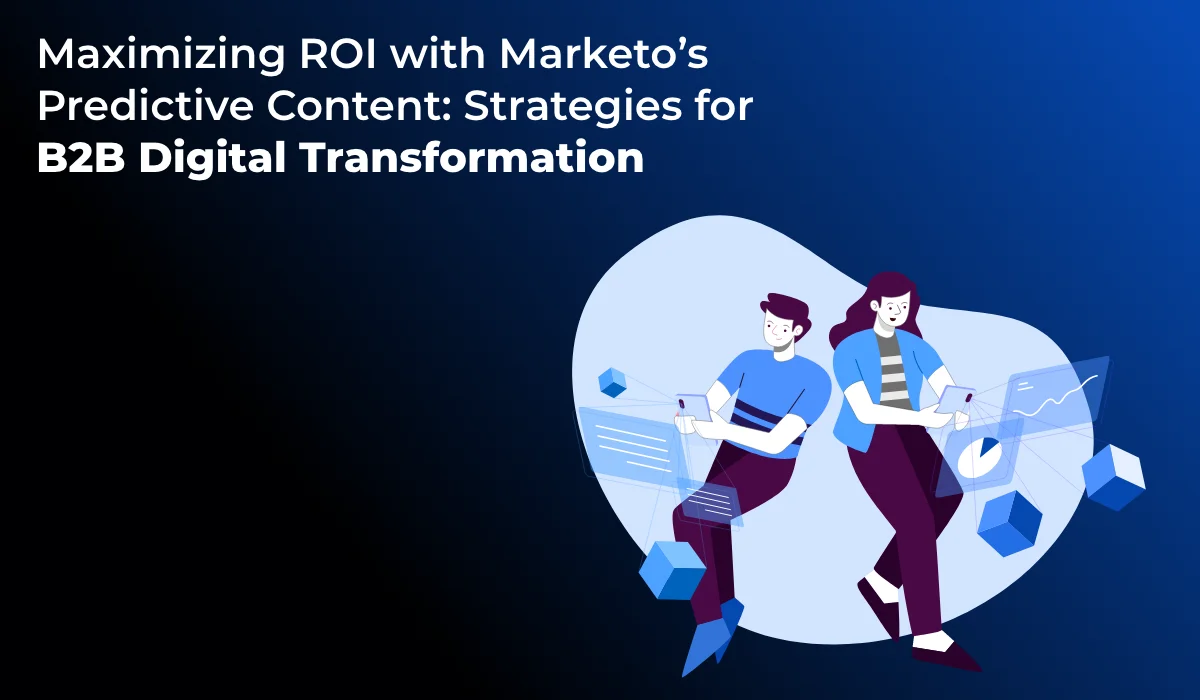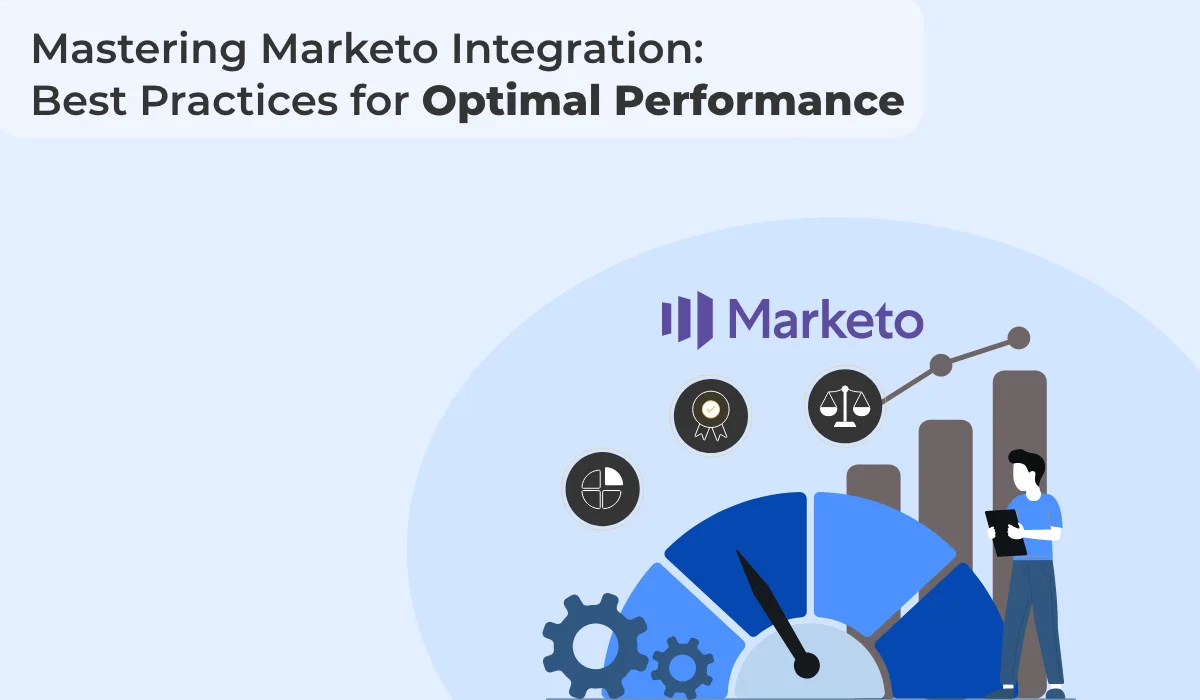4 Ways Marketo Sales Connect Can Help You Convert More Leads

Published on: April 3, 2023
Updated on: July 08, 2024
618 Views
- Marketo
9 min read
Today, brands create marketing campaigns to promote focused efforts that guide customers toward the desired action. These campaigns are specifically designed to give brands an identity, personality, and emotion. The right marketing campaign can do the same for your business.
And a powerful marketing automation platform like Marketo helps to plan, create, and execute those campaigns.
And if you already use it for your marketing operations, you’re a step ahead in automating processes and eliminating a lot of effort and time spent on getting marketing campaigns right.
In this blog post, we’ll talk about campaign management in Marketo, how Marketo makes campaign management easy, and best practices while setting up a campaign in Marketo to deliver results that align with your overall business goals.
The What and the Why of Marketing Campaigns
Marketing campaigns are an organized series of operations and efforts that promote a specific company goal. It can include improving brand awareness, marketing a new product or service, or driving website conversion. You can create, measure, track, and analyze campaign results across different channels using campaign management. Marketing campaign management is crucial for:
- Acquiring new customers
- Creating and boosting brand awareness
- Launching a new product or service
- Improving revenue generation
- Personalizing customer experience
- Enhancing campaign performance
- Communicating with your audience
Different Types of Marketing Campaigns
Marketing campaigns come in various types, each designed to achieve specific goals and target different aspects of the marketing funnel. Here's an overview of some common types of marketing campaigns:
1. Email Campaigns
Email campaigns are the backbone of most marketing automation strategies. They involve sending targeted, personalized emails to your audience to achieve a specific objective, such as nurturing leads, promoting content, or making announcements. Here are some common types of email campaigns in Marketo:
- Drip Campaigns: Drip campaigns send pre-written emails to leads at specific intervals, keeping them engaged over time. They are ideal for nurturing leads, onboarding new customers, or providing educational content.
- Triggered Campaigns: Triggered campaigns begin when an event or action, such as a lead filling out a form, clicking a link in an email, or visiting a specific web page, occurs. These campaigns enable real-time, personalized engagement based on user behavior.
- Newsletters: Newsletters are periodic emails informing your audience about your company's latest news, product updates, or content pieces. They help maintain regular communication with your audience and build brand loyalty.
2. Event Campaigns
Event campaigns promote, manage, and analyze events. These campaigns streamline the event management process, from registration to post-event follow-up. They can include:
- Webinar Campaigns: Webinar campaigns involve promoting and managing online webinars, including sending invitations, handling registrations, and sending post-webinar follow-up emails.
- Live Event Campaigns: Live event campaigns manage in-person events like tradeshows, workshops, or seminars, including promoting the event, managing registrations, and post-event communications.
- Hybrid Event Campaigns: Hybrid event campaigns combine elements of in-person and online events, enabling you to cater to a broader audience and provide a flexible experience for attendees.
3. Nurture Campaigns:
Nurture campaigns aim to engage and guide leads through the sales funnel by providing timely, relevant content based on their position in the buyer's journey. They can include:
- Welcome Campaigns: Welcome campaigns introduce new leads to your company and set the stage for future communications, providing critical information and resources to help them get started.
- Top-of-Funnel Campaigns: Top-of-funnel campaigns target leads in the awareness stage, providing educational content to help them identify their challenges and potential solutions.
- Middle-of-Funnel Campaigns: Middle-of-funnel campaigns target leads in the consideration stage, showcasing your product or service's unique value proposition and differentiators to persuade them to choose your offering.
- Bottom-of-Funnel Campaigns: Bottom-of-funnel campaigns target leads in the decision stage, providing case studies, testimonials, or personalized demos to help them decide.
4. Account-Based Marketing (ABM) Campaigns
ABM campaigns focus on engaging high-value accounts with personalized, targeted marketing efforts to generate revenue. These campaigns often involve collaboration between marketing and sales teams to identify key accounts, develop targeted content, and execute a strategic approach. Common types of ABM campaigns include:
- Target Account Campaigns: Target account campaigns focus on engaging a specific set of high-value accounts by delivering personalized content, messaging, and offers tailored to their unique needs and pain points.
- Industry-Specific Campaigns: Industry-specific campaigns target high-value accounts within a particular industry, using tailored content and messaging that addresses these companies' unique challenges and opportunities.
- Role-Based Campaigns: Role-based campaigns target decision-makers within high-value accounts based on their job roles and responsibilities, providing content and messaging that resonates with the audience.
How to Set Up Winning Marketing Campaigns in Marketo
Marketo is a robust platform that allows you to leverage marketing data for advanced personalization and segmentation to drive results that align with your business goals.
- Define Your Campaign Objectives and KPIs
Before you begin setting up your Marketo campaign, defining your campaign objectives and key performance indicators (KPIs) is crucial. This will help you measure your campaign's success and inform your strategy. Your goals can include increasing brand awareness, generating leads, or driving conversions, while KPIs could consist of metrics like click-through rates, conversion rates, or generated revenue. Once you define your campaign goals:
- Review the different Marketo campaign types (Email, Event, Nurture, and ABM) and determine which type best aligns with your campaign objectives.
- Create a folder structure in Marketo's Marketing Activities section to organize your campaigns. Group similar drives together and use descriptive folder names for easy navigation.
- Create and Configure Your Marketo Campaign
To create a top-performing marketing campaign in Marketo:
- Creating a New Program: In the Marketing Activities section, click "New" and select the appropriate program type (e.g., Email, Event, Nurture, or ABM) based on your campaign objectives.
- Defining Your Target Audience: Create a Smart List in Marketo to define your target audience using filters and segmentation rules based on criteria like demographics, behaviors, or lead scores.
- Designing and Creating Campaign Assets: Design and create the necessary campaign assets, such as emails, landing pages, and forms. Use Marketo's Email Editor and Landing Page Builder to create visually engaging and responsive assets.
- Setting Up Campaign Flows: In the Flow tab of your program, set up the sequence of actions, triggers, and filters that define your campaign's logic. This includes sending emails, changing lead scores, or updating data values based on specific criteria or actions taken by your leads.
- Scheduling and Launching Your Campaign: In the Schedule tab, set your campaign's start date and time or click "Run Once" to launch it immediately. Ensure all assets and flows are thoroughly reviewed and tested before scheduling.
- Perform A/B Testing to Optimize Your Campaign
Conduct A/B tests on your campaign assets, such as subject lines, email copy, or landing page designs, to identify the most effective versions. Use Marketo's A/B testing feature to set up and analyze your tests. Also, ensure your emails, landing pages, and forms are optimized for mobile devices. Use Marketo's responsive design features to create assets that adapt to various screen sizes and devices.
- Track and Analyze Your Campaign Performance
Measuring and analyzing your Marketo campaign performance can help you identify gap areas and understand how to run your next campaign. You can measure results by:
- Tracking the performance of your email campaigns by monitoring key metrics such as open rate, click-through rate, and conversion rate. Use Marketo's Email Insights to access detailed reports and analyze your email performance.
- Evaluate the overall success of your campaign by reviewing program performance reports in Marketo. These reports provide insights into metrics like leads generated, revenue, and return on investment (ROI).
- Use Marketo's attribution reporting tools to understand the impact of your marketing efforts on revenue generation. Analyze multi-touch attribution models to determine which channels and touchpoints contribute the most to your success. Additionally, leverage Marketo's web analytics features to track the performance of your landing pages and forms, identifying areas for improvement.
Best Practices to Follow While Setting Up Campaigns in Marketo
Setting up campaigns in Marketo effectively requires adherence to best practices to maximize your marketing automation platform's capabilities. Here are some best practices to follow:
- Personalization: Personalize your content and communications to make them more engaging and relevant to your audience. Use Marketo's personalization features, such as dynamic content and tokens, to customize email subject lines, body content, and landing pages based on the recipient's information or behavior.
- A/B Testing: Test different versions of your assets to determine which one performs best. Marketo's A/B testing features allow you to test variations of emails, subject lines, landing pages, and other assets. Analyze the results to identify the most effective elements and continuously apply these learnings to improve your campaigns.
- Lead Scoring: Implement lead scoring to prioritize and nurture high-quality leads. Marketo's Lead Scoring feature enables you to assign scores to leads based on their behavior, demographic data, or other criteria. You can allocate resources more effectively and improve conversion rates by focusing on high-scoring leads.
- Lead Nurturing: Develop nurture campaigns to engage and guide leads through the sales funnel. Use Marketo's Engagement Programs to create targeted, automated email campaigns that provide timely and relevant content based on a lead's position in the buyer's journey. This helps build stronger relationships with leads and helps to move them closer to conversion.
- Mobile Optimization: Optimize your content for mobile devices to cater to the growing number of mobile users. Ensure your emails, landing pages, and forms are designed using responsive templates and are easily viewable on various screen sizes and devices.
- Analyze and Optimize: Continuously analyze your campaign performance data to identify areas for improvement. Use Marketo's reporting and analytics tools to track key metrics, such as open rates, click-through rates, and conversion rates. Apply insights from this analysis to optimize your campaigns and drive better results.
Conclusion
Marketo campaigns can be incredibly effective when executed properly. By understanding the different campaign types, setting up your campaign strategically, following best practices, and analyzing performance data, you can maximize the impact of your marketing efforts.
Wish to Set Up Successful Marketing Campaigns in Marketo? Let’s Talk!
Our marketing scientists will be happy to play a part in your Marketo journey and help you stay ahead of the competition. Just drop us a line at info@growthnatives.com and we’ll take it from there.
Frequently Asked Questions
Marketo Sales Connect is a sales enablement tool that integrates with Marketo’s marketing automation platform, providing sales teams with valuable insights, automation capabilities, and personalized communication tools to effectively engage and convert leads.
Marketo Sales Connect benefits sales teams by providing access to real-time lead insights, enabling personalized outreach, automating follow-up tasks, and facilitating seamless collaboration between sales and marketing teams.
Convert more leads into sales by nurturing relationships, providing valuable content, personalizing communication, leveraging social proof, addressing objections, offering incentives, and timely follow-ups to guide prospects through the buyer’s journey effectively.
In Marketo, leads are created through various channels like web forms, landing pages, email subscriptions, or imported lists, with data capture mechanisms integrated to capture prospect information for further engagement.
Yes, Marketo Sales Connect can help in sales prospecting by providing lead insights, identifying engaged leads, tracking prospect behavior, and facilitating personalized outreach, helping sales reps identify and prioritize prospects more effectively.



